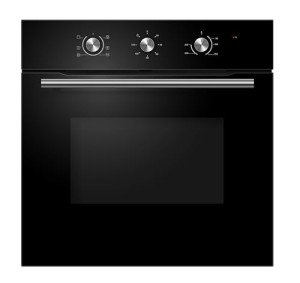Understanding Integrated Oven Sizes: A Comprehensive Guide
Integrated ovens have become synonymous with modern kitchen areas, offering sleek visual appeals and effective cooking options. As homeowners go for a smooth look in their cooking areas, comprehending integrated oven sizes ends up being important for optimizing kitchen layouts and ensuring efficient cooking. This post dives into the numerous integrated oven sizes available in the market, their dimensions, and how to select the ideal one for your home.
What is an Integrated Oven?
An integrated oven is developed to be built into kitchen cabinets, supplying a streamlined look that mixes easily with the rest of the kitchen. Unlike freestanding built in oven hob and hood package , integrated ovens can be concealed behind cabinetry doors or situated at eye level, making them a popular choice for modern kitchens.
Secret Features of Integrated Ovens
- Space-saving style: Optimizes kitchen location without jeopardizing design.
- Adjustable finishes: Available in different colors and products to match kitchen design.
- Advanced technology: Often geared up with contemporary features, including clever technology, differing cooking modes, and energy-efficient operations.
Typical Integrated Oven Sizes
When considering an integrated oven, the most vital aspect to evaluate is its size. Integrated ovens can be found in numerous dimensions, normally created to fit basic kitchen cabinets. The following table describes the most typical integrated oven sizes:
| Oven Type | Height (mm) | Width (mm) | Depth (mm) | Cooking Capacity (litres) |
|---|---|---|---|---|
| Single Built-In | 590 | 595 | 550 | 60-70 |
| Double Built-In | 590 | 595 | 550 | 60 (each oven, overall 120) |
| Compact Built-In | 450 | 595 | 550 | 30-40 |
| Mix Microwave | 455 | 595 | 550 | 30-40 |
| Wall Oven | 720 | 600 | 550 | 70-90 |
Considerations When Choosing an Integrated Oven Size
When it concerns choosing the proper size for an integrated oven, there are several elements to consider:
- Kitchen Layout: Evaluate your kitchen area and decide where the oven will be integrated into kitchen cabinetry.
- Cooking Needs: Consider how frequently you cook and your cooking choices (e.g., baking, roasting).
- Offered Space: Measure readily available cabinets dimensions to guarantee the oven fits comfortably.
- Capability Requirements: Assess the size of meals you usually prepare, particularly for households or when entertaining visitors.
- Future-proofing: Think about including trends such as wise technology or versatility in usage.
Kinds Of Integrated Ovens
Integrated ovens are offered in several types, each offering distinct advantages:
- Conventional Ovens: Standard cooking functions, appropriate for a lot of cooking techniques like baking and roasting.
- Steam Ovens: Utilize steam for cooking, best for much healthier dishes, retaining wetness and nutrients.
- Convection Ovens: Circulate hot air for even cooking, terrific for baking pastries and multiple dishes simultaneously.
- Microwave Ovens: Offer quick reheating or defrosting alternatives and can be combined with traditional ovens for flexibility.
Advantages of Integrated Ovens
Integrated ovens offer numerous benefits that can improve the cooking experience:
- Aesthetics: Offers a tidy style that fits effortlessly into any kitchen decoration.
- Space performance: Maximizes space by utilizing built-in cabinets.
- Ergonomics: Mounting ovens at eye level improves convenience and safety when getting rid of hot meals.
- Increased performance: Many integrated options come with features such as self-cleaning and clever connection.
Regularly Asked Questions (FAQs)
1. What is the basic size for an integrated oven?
The most common size for a single built-in oven is approximately 590mm in height, 595mm in width, and 550mm in depth.
2. Can I set up an integrated oven in an existing kitchen?
Yes, as long as the existing kitchen cabinetry can accommodate the size and specs of the chosen oven, it can be integrated seamlessly.
3. Do integrated ovens have a bigger capacity than freestanding ones?
Usually, integrated ovens have a comparable capacity to freestanding models; nevertheless, particular designs may vary. Constantly check the requirements for ideal area and capacity.
4. Are integrated ovens more expensive than freestanding ovens?
Incorporating an oven can be more pricey due to installation and modification. Nevertheless, costs differ based upon brand name and innovation, so it's important to compare choices.
5. Is maintenance various for integrated ovens?
Upkeep for integrated ovens resembles that of freestanding models but may need more care with built-in cabinets elements. Regular cleaning and comprehending the oven's functions are important for durability.
Picking the best integrated oven size is vital for enhancing kitchen space and enhancing cooking experiences. By comprehending the different configurations readily available and thinking about individual cooking requirements, house owners can flawlessly incorporate a modern oven into their kitchens. With a series of styles to fit diverse aesthetic appeals and functionalities, integrated ovens remain a popular option for modern cooking spaces. Whether you're refurbishing or developing a brand-new kitchen, choosing an integrated oven customized to your requirements will make sure years of complete satisfaction and culinary imagination.

